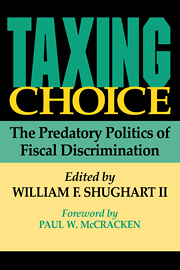The Scholastic Aptitude Test (SAT) of the College Board became popular after World War II mainly to provide a reasonably objective means of increasing emphasis on academic merit in admissions to elite colleges. As Jerome Karabel (author of The Chosen: The Hidden History of Admission and Exclusion at Harvard, Yale, and Princeton) vividly pointed out more than a decade ago, introducing the SAT as a major admission determinant helped reduce blatant discrimination against Jews and other relatively disadvantaged groups. It lowered the power of admissions officers to use their discretion and discriminate against those who did not fit the Ivy League’s seeming preference for rich mostly Protestant kids from private secondary schools.
I fear we are somewhat returning to the bad old days, as we enter an era of “test-optional” admissions, meaning increased admission officer discretion (“holistic” admission procedures) to admit the kind of class currently considered politically correct—the “right” portion of persons classified by gender, race, income, religion, sexual preferences and other attributes. The emphasis on academic potential seems to be downplayed, perhaps not surprisingly in an age where college students spent little time actually studying, and grade inflation is rampant.
SAT, losing the business of prestigious schools (e.g., the University of Chicago) to either the rival ACT or to no testing whatsoever, wants to offer new information (an “Adversity Index”) to admissions officers so they can achieve a perceived optimal socioeconomic mix of students. If a person lives in a high crime area with low incomes but much poverty, that information will be passed on to schools as part of the index. Schools, wanting to demonstrate that they are “inclusive” will start bragging about the high adversity index of their students. Want to get your kid into a top school but not go to jail trying? First, improve the SAT score by claiming your child has a disability requiring them extra time on the test. Second, move, at least on paper, during your child’s senior year to some slum with lots of crime. Other people’s crime may help get Johnny or Joanna into college. Admissions officers might start computing “adjusted” SAT scores—correcting for disadvantages measured by the adversity index.
Rival ACT is not going along. Its president Marten Roorda points out that the SAT adversity index has not been validated by researchers. There are literally thousands of different ways such an index can be constructed. Roorda makes an even better point, however: “If I were a student, I would become concerned or angry if the testing company would provide a diversity score to colleges, without me knowing it, without me approving it.” The student is paying for information he or she is forbidden to have. Is that legal or ethical?
Here’s the dilemma. Currently, top schools are populated mainly by affluent kids. Raj Chetty and associates suggest the average family income of Ivy League students approximates $500,000, and the median is around $200,000. These schools are getting a PR beating for favoring affluent white students. Admitting rich kids is financially rewarding—they more likely pay the full published tuition fee and probably later in life will make greater donations. Moreover, on average, high-income kids have higher test scores and grades, went to better high schools, come from intact families with strong work ethics, etc. So using strict academic criteria to admit students leads to entering classes dominated by affluent kids.
The American Dream, however, revolves around income mobility—people overcoming adversity and moving from poverty to prosperity, which, in today’s world, means becoming relatively highly educated. The reality, however, is that most poor people today lack good college degrees needed to ascend the economic ladder, so income mobility in America, once extremely high, is now declining and below that of many other countries. The elite schools are damned if they do and damned if they don’t. Heavily increasing the representation of people facing more adversity will be viewed favorably politically, but likely lead to less good students who likely will fare typically less well in life, taking fewer leadership positions. Job One for colleges is to promote the creation and dissemination of knowledge. Additionally, however, colleges are screening devices separating the ordinary from the extraordinary, the leaders from the followers. Colleges face a challenge: Do they try to maximize learning or income mobility? Stay tuned.












